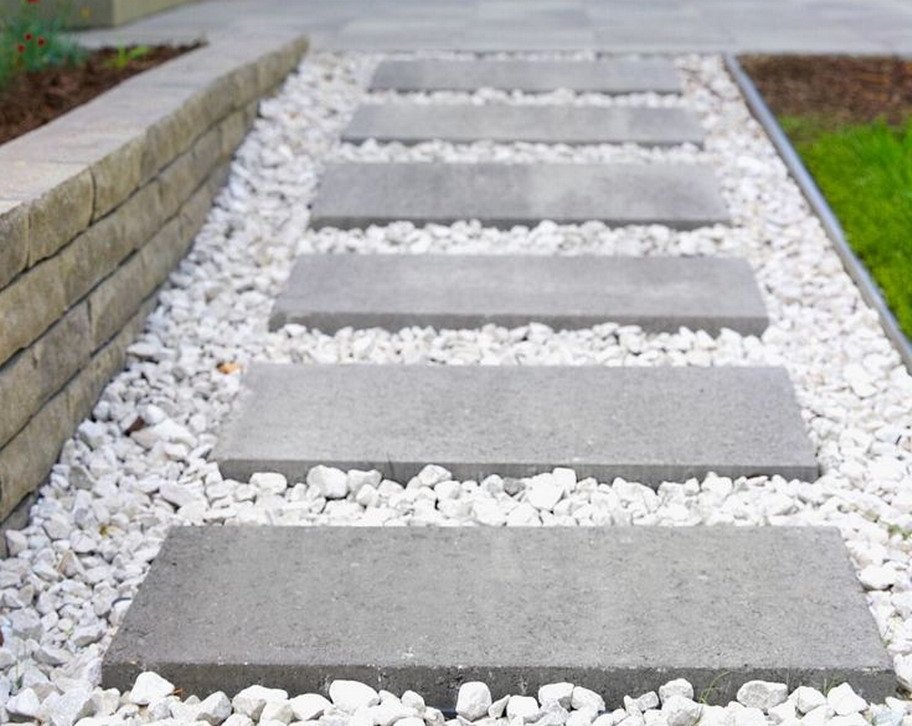If you want a walkway that’s easy to maintain and comfortable to walk on, choosing the right gravel is key. Many homeowners struggle with uneven surfaces, scattered stones, and drainage issues that turn their beautiful pathways into maintenance nightmares.
The best gravel for walkways typically depends on your specific needs, but crushed stone and decomposed granite consistently rank among the top choices. These materials offer excellent stability, proper drainage, and require minimal maintenance while providing an aesthetically pleasing finish.

Your walkway deserves the perfect gravel type, and there’s quite a range to consider.
Crushed stone is a top choice for walkways, offering exceptional stability through its angular edges that interlock when compacted. It comes in various sizes, with popular options like Crusher Run and 3/8″ Minus. Its excellent drainage capabilities and resistance to freeze-thaw cycles make it particularly suitable for Canadian climates. The material creates a firm, stable surface that handles heavy foot traffic well.
DG provides a natural, earthy appearance while offering practical benefits for walkways. When properly compacted, it creates a firm surface that’s both comfortable and ADA-compliant. Available in various colors from tan to grey, it can be enhanced with stabilizers for reduced maintenance. The fine, sandy texture creates a smooth, cohesive surface that blends seamlessly with landscape designs.
Select gravel types that match your path’s usage level. While pea gravel suits light-traffic garden paths, high-traffic areas need durable crushed stone. This ensures your walkway maintains its integrity over time.
Water management is important for walkway longevity. Angular gravel creates gaps that allow better water flow, preventing pooling and erosion. This is especially important in areas prone to heavy rainfall or poor drainage.
Your gravel choice should complement your landscape design. Consider color variations and textures that enhance your outdoor space. River rock adds natural beauty, while decomposed granite offers a more refined, rustic appearance.
Different gravel types require varying levels of upkeep. Choose materials that compact well and resist displacement. Consider long-term maintenance needs to minimize frequent repairs or replacements.
Local weather patterns should influence your gravel selection. Areas with frequent rain or snow need materials resistant to washing away or degradation. Choose options that can withstand your specific climate challenges.
Cost-effective solutions like crushed limestone can provide both functionality and visual appeal. Balance your budget with your desired aesthetic and practical requirements to find the optimal gravel choice.
Keeping your gravel walkway in top shape requires regular attention to ensure its longevity. A quick weekly inspection helps spot potential issues like displaced stones or emerging weeds before they become major problems.
Different gravel types need varying levels of maintenance. Pea gravel tends to scatter more easily, requiring more frequent raking and redistribution. Meanwhile, crushed stone stays more stable but may need occasional leveling in high-traffic areas.
To maintain your walkway’s appearance, plan on adding a fresh layer of gravel every 2-3 years. Watch for signs of erosion after heavy rains and address any drainage issues promptly to prevent damage.
Gravel walkways offer numerous advantages that make them an attractive choice for landscaping.
While gravel walkways have many benefits, they may not be suitable for all situations. Accessibility can be a significant concern, as the loose surface makes it challenging for wheelchairs, strollers, or people with mobility issues.
High-traffic areas might require frequent maintenance to address scattered gravel and maintain an even surface. The loose nature of gravel means it’s not ideal for bare feet or wheeled furniture.
Maintenance requirements, including regular re-leveling, topping up, and weed control, can be more demanding than solid surfaces like concrete or pavers. These factors should be carefully weighed against your specific needs and circumstances before making a final decision.
Gravel walkways can look charming, but they aren’t always the most practical option, dafespecially with Fredericton’s weather and freeze–thaw cycles. Before you commit, it’s worth considering whether a more solid and long-lasting surface like pavers or concrete would better suit your space, your lifestyle, and the look you want.
Every property and walkway purpose is different, so let’s talk about your needs first. Reach out to Atlantic Hardscape and Concrete, Fredericton’s number-one choice for beautiful and durable walkway installations. We’ll help you choose the best material for your project and create a walkway that stays strong, clean, and stunning for years. Ready to plan your walkway? Contact us and let’s get started.
For walkways, gravel sized between ¼ and ⅜ inches creates the most comfortable and practical pathway surface. This specific size range offers excellent stability while ensuring a smooth, easy walking experience for pedestrians. Smaller stones in this range lock together well, preventing excessive movement and providing a firm, compact foundation for your outdoor path.
For a sturdy and comfortable walkway, aim for a gravel depth of 2 to 3 inches. This depth provides sufficient stability and support for foot traffic while maintaining a level and aesthetically pleasing surface. Proper depth ensures your walkway remains compact and functional over time.
GET STARTED
Your dream space is within reach as we work together from detailed 3-D designs to the final custom build. Our process is both professional and exciting, and we look forward to taking this journey with you.
Contact
34 Jackstraw Court, Fredericton, NB, Canada, New Brunswick